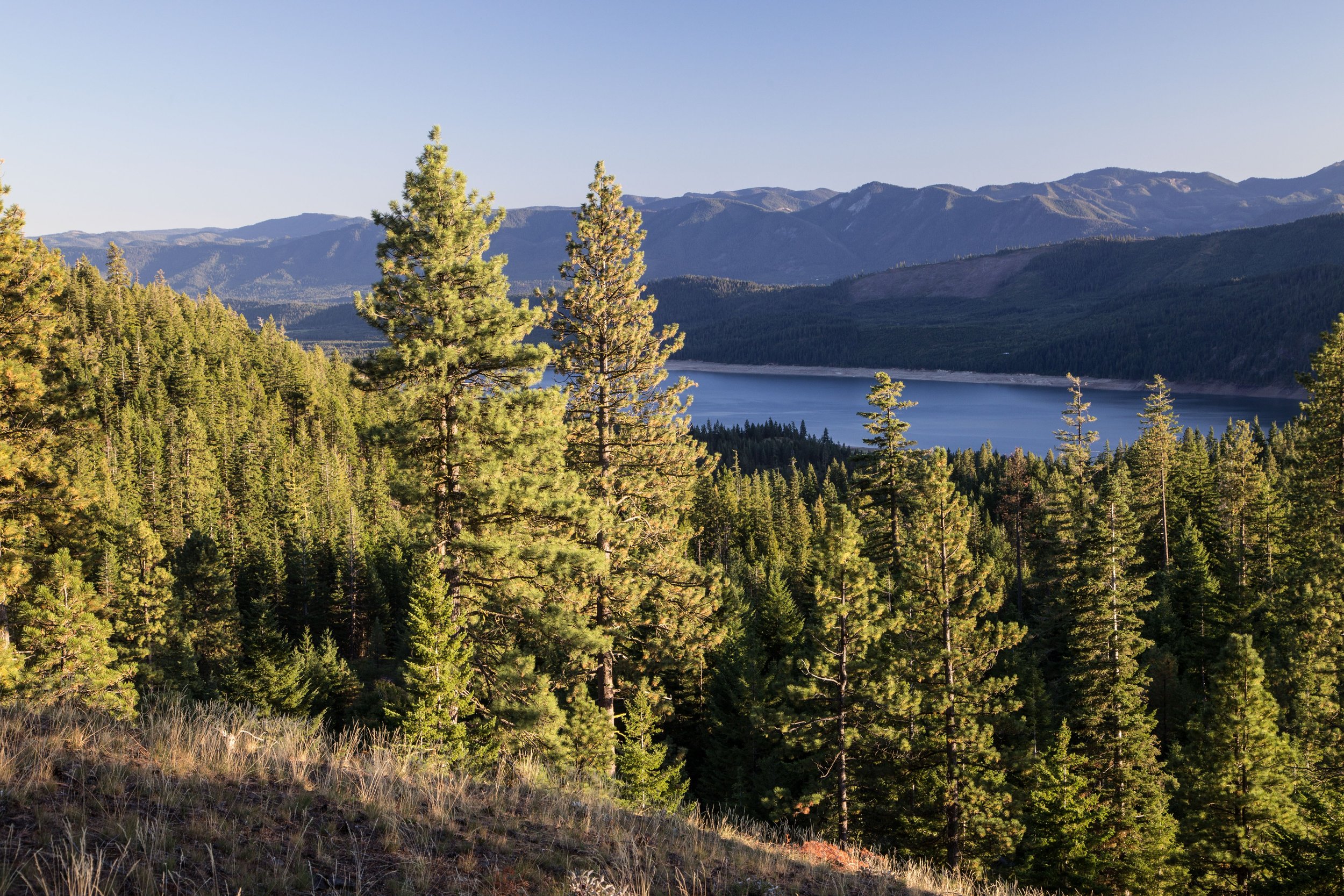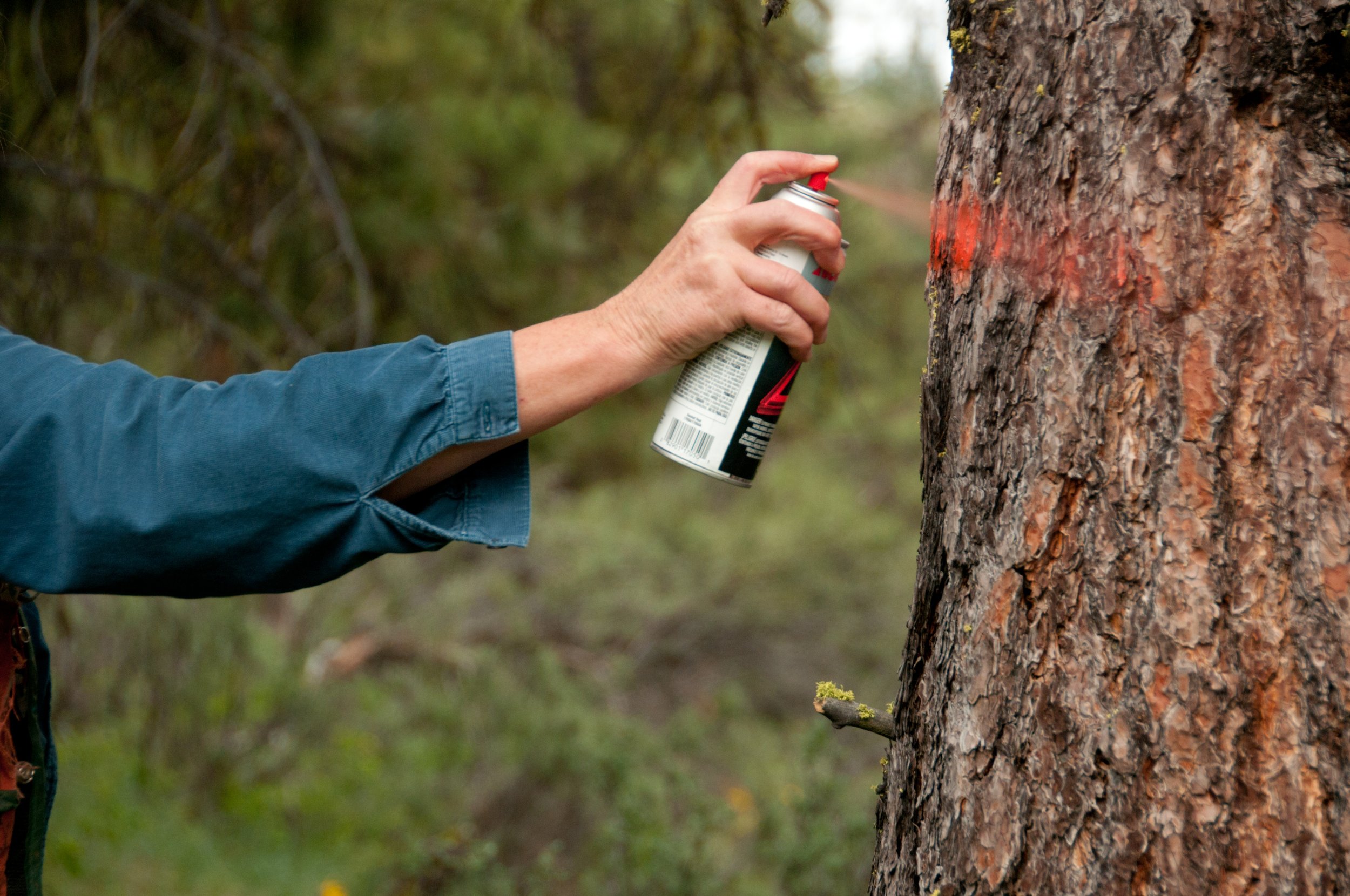When it comes to finding the perfect Christmas tree, the choices are endless. Tall and lean, or short and full? Spacious room for ornaments or tight, lush branches? Do you like the emerald, green of a fresh-cut tree or a light dusting of ‘snow’ for the winter wonderland vibe? Perhaps the most important decision is real vs. artificial, but what are the most environmentally friendly options?
The answer may be surprising: A real tree is better for the planet!
Trees provide a multitude of benefits as they grow including carbon sequestration and clean air, but overgrown stands increase wildfire risk. Thinning these stands can increase community resilience and provide sustainably harvested trees. © John F Marshall
Real trees are a renewable resource. While growing, they provide clean air and clean water, habitat for wildlife, and capture and store carbon, lowering greenhouse gas emissions. On top of that, real trees can be recycled or composted in most communities. Artificial trees on the other hand, create more carbon pollution because of the energy needed to produce and transport them, and are often made of plastic (fossil fuels). For artificial trees to even come close to the same climate outcome as real trees, they’d need to be used for decades. And they can never compare to the zero-waste of real trees.
The Nature Conservancy and the Kiwanis Club of Cle Elum are taking the sustainability of real trees one step further with benefits for conservation and the community.
Nearly a decade ago, The Nature Conservancy was able to “push the pause button” on development that threatened 48,000 acres of land owned and managed by Plum Creek Timber. These lands now make up the Central Cascades Forest—an important landscape for forest restoration and fire resilience for the communities of Roslyn, Ronald and Cle Elum. Prior to TNC’s management of these lands, the local Kiwanis club had an agreement with Plum Creek Timber to harvest trees and sell them as part of an annual fundraiser supporting student scholarships.
Cle Elum ridge transforms into a winter wonderland during the winter months. © Hannah Letinich/TNC
A forester marks a tree for ecological thinning. © Hannah Letinich/TNC
Today, The Nature Conservancy and the Kiwanis Club continue this tradition with an added element of conservation benefit. Every holiday season, the Kiwanis Club gathers about 120-150 trees from the Central Cascade Forest, ranging in species and sizes between four and fifteen feet tall. The trees are all collected from previously clear-cut, secondary-growth forests—denser than a healthy forest should be, these tree stands are already set for selective, ecological thinning—a crucial part of forest management and fire resilience.
Not only are these real trees a more environmentally friendly option for the holidays, but their harvest supports forest restoration and proceeds go towards student scholarships. It’s a win-win-win for the holiday season.
Featured image: Looking up at the forest canopy and the dusting of snow on the trees. © Hannah Letinich/TNC























